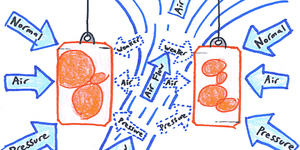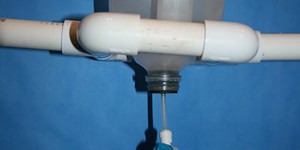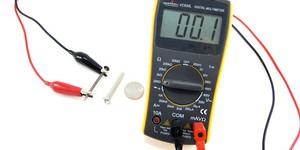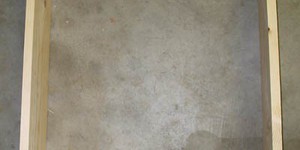Others Like “Which Is the Better Insulation Material?” (top 20 results)
|
Did you know that you can actually make objects come together by blowing air between them? Find out how wind changes air pressure to bring to objects together in this easy and fun science fair project!
Read more
Solar cells provide a clean way of making electricity directly from sunlight. In this project you will build a simple circuit and experimental setup to investigate whether the power output of a solar cell changes with ambient temperature.
Read more
When we get hot, we sweat. The physiological role of sweat is to cool us down. When the water evaporates, it removes energy from our bodies. This sort of evaporative cooling can also be used to cool homes, using what are referred to as swamp coolers. Evaporative cooling is also a potential source of energy waste in the kitchen because it increases the time it takes to heat water. In this chemistry science fair project, you will study how a variety of things cool down, whether for better or…
Read more
Water is an interesting thing. We drink it, swim in it, and wash ourselves with it. We can get energy from
water by damming it and sending it through a turbine. But did you know that we can use the natural electrical
charges present in water and a Kelvin electrostatic generator to create sparks? You can even use a
Kelvin electrostatic generator to temporarily light a bulb! Now that is one bright idea!
Read more
Measuring the value of a resistor with a multimeter is pretty simple. You set the multimeter to measure resistance, connect the two leads to the resistor (possibly using some handy alligator clips), and read the resistance value. This is called a two-point measurement (one probe on each of the two resistor leads). But what if the resistance you want to measure is very small, in the milli or micro-ohm (mΩ or μΩ) range? This can introduce problems because many low-cost multimeters…
Read more
Have you ever noticed that when you drop a basketball, its bounce does not reach the height you dropped it from? Why is that? When a basketball bounces, such as on a basketball court, its bounce actually loses momentum by transferring energy elsewhere. This means that to dribble the basketball, players must continually replace the transferred energy by pushing down on the ball. But what happens to the "lost" energy? As we know from physics, energy is not really lost, it just changes form. One…
Read more
This is an interesting experiment if you are 1) curious about insect metamorphosis and 2) patient! You will need to set up different controlled environments for the chrysalides, and then check on them regularly as you wait for them to hatch.
Read more
You're at the high school football game and it's getting pretty chilly as the sun goes down. You're determined to keep cheering for your team, but your hands are freezing—have you ever tried hand warmers? The chemistry within these little packets is pretty cool. Hand warmers provide a unique and fun way to study the chemistry of crystal formation and heat generation. By pressing a button in a pouch, which contains a supercooled solution, you start a rapid exothermic (heat-producing)…
Read more
Has the temperature in your house felt hotter or colder recently? This could be due to the greenhouse effect. The greenhouse effect states that gases in the atmosphere, such as CO2, might increase the surface temperature of Earth. In this science fair project, you will build a small model of Earth and use it to see how the temperature varies, compared to outside of the model. If you select this science fair project, you will be a part of the effort that is working to figure out what role…
Read more
Solar cells are an alternative method for generating electricity directly from sunlight. With this project, you can get down to the atomic level and learn about the world of solid-state electronics as you investigate how solar cells work. Your experiment will measure the effect of changing light intensity on power output from the solar cell. A possible variation would be to investigate the effect of changing the color of the light.
Read more
|
Explore Our Science Videos
Build a Solar-Powered Car for the Junior Solar Sprint
Make a Thermometer - STEM Activity
Flower Dissection – STEM Activity










